- Home
- Nathaniel Philbrick
In the Heart of the Sea: The Epic True Story That Inspired Moby-Dick
In the Heart of the Sea: The Epic True Story That Inspired Moby-Dick Read online
In the Heart of the Sea
THE TRAGEDY OF THE WHALESHIP ESSEX
NATHANIEL PHILBRICK
To Melissa
And in the greatness of thine excellency thou has overthrown them that rose up against thee: Thou sentest forth thy wrath, which consumed them as stubble. And with the blast of thy nostrils the waters were gathered together, the floods stood upright as a heap, and the depths were congealed in the heart of the sea.
-EXODUS 15:7-8
This is the end of the whaleroad and the whale
Who spewed Nantucket bones in the thrashed swell...
This is the end of running on the waves;
We are poured out like water. Who will dance
The mast-lashed master of Leviathans
Up from this field of Quakers in their unstoned graves?
-ROBERT LOWELL, “The Quaker Graveyard in Nantucket”
PREFACE
February 23, 1821
LIKE A GIANT BIRD of prey, the whaleship moved lazily up the western coast of South America, zigging and zagging across a living sea of oil. For that was the Pacific Ocean in 1821, a vast field of warm-blooded oil deposits known as sperm whales.
Harvesting sperm whales-the largest toothed whales in existence-was no easy matter. Six men would set out from the ship in a small boat, row up to their prey, harpoon it, then attempt to stab it to death with a lance. The sixty-ton creature could destroy the whaleboat with a flick of its tail, throwing the men into the cold ocean water, often miles from the ship.
Then came the prodigious task of transforming a dead whale into oil: ripping off its blubber, chopping it up, and boiling it into the high-grade oil that lit the streets and lubricated the machines of the Industrial Age. That all of this was conducted on the limitless Pacific Ocean meant that the whalemen of the early nineteenth century were not merely seagoing hunters and factory workers but also explorers, pushing out farther and farther into a scarcely charted wilderness larger than all the earth's landmasses combined.
For more than a century, the headquarters of this global oil business had been a little island called Nantucket, twenty-four miles off the coast of southern New England. One of the defining paradoxes of Nantucket's whalemen was that many of them were Quakers, a religious sect stoically dedicated to pacifism, at least when it came to the human race. Combining rigid self-control with an almost holy sense of mission, these were what Herman Melville would call “Quakers with a vengeance.”
It was a Nantucket whaleship, the Dauphin, just a few months.into what would be a three-year voyage, that was making her way up the Chilean coast. And on that February morning in 1821, the lookout saw something unusual-aboat, impossibly small for the open sea, bobbing on the swells. The ship's captain, the thirty-seven-year-old Zimri Coffin, trained his spyglass on the mysterious craft with keen curiosity.
He soon realized that it was a whaleboat-double-ended and about twenty-five feet long-but a whaleboat unlike any he had ever seen. The boat's sides had been built up by about half a foot. Two makeshift masts had been rigged, transforming the rowing vessel into a rudimentary schooner. The sails-stiff with salt and bleached by the sun had clearly pulled the boat along for many, many miles. Coffin could see no one at the steering oar. He turned to the man at the Dauphin wheel and ordered, “Hard up the helm.”
Under Coffin's watchful eye, the helmsman brought the ship as close as possible to the derelict craft. Even though their momentum quickly swept them past it, the brief seconds during which the ship loomed over the open boat presented a sight that would stay with the crew the rest of their lives.
First they saw bones-human bones-littering the thwarts and floorboards, as if the whaleboat were the seagoing lair of a ferocious, man-eating beast. Then they saw the two men. They were curled up in opposite ends of the boat, their skin covered with sores, their eyes bulging from the hollows of their skulls, their beards caked with salt and blood. They were sucking the marrow from the bones of their dead shipmates.
Instead of greeting their rescuers with smiles of relief, the survivors too delirious with thirst and hunger to speak were disturbed, even frightened. They jealously clutched the splintered and gnawed-over bones with a desperate, almost feral intensity, refusing to give them up, like two starving dogs found trapped in a pit.
Later, once the survivors hadbeen given some food and water (and had finally surrendered the bones), one of them found the strength to tell his story. It was a tale made of a whaleman's worst nightmares: of being in a boat far from land with nothing left to eat or drink and perhaps worst of all of a whale with the vindictiveness and guile of a man.
Even though it is little remembered today, the sinking of the whale-ship Essex by an enraged sperm whale was one of the most well-known marine disasters of the nineteenth century. Nearly every child in America read about it in school. It was the event that inspired the climactic scene of Herman Melville's Moby-Dick.
But the point at which Melville's novel ends-the sinking of the ship-was merely the starting point for the story of the real-life Essex disaster. The sinking seemed to mark the beginning of a kind of terrible laboratory experiment devised to see just how far the human animal could go in its battle against the savage sea. Of the twenty men who escaped the whale-crushed ship, only eight survived. The two men rescued by the Dauphin had sailed almost 4,500 nautical miles across the Pacific-farther by at least 500 miles than Captain William Bligh's epic voyage in an open boat after being abandoned by the Bounty mutineers and more than five times farther than Sir Ernest Shackleton's equally famous passage to South Georgia Island.
For nearly 180 years, most of what was known about the calamity came from the 128-page Narrative of the Wreck of the Whaleship Essex, written by Owen Chase, the ship's first mate. Fragmentary accounts from other survivors existed, but these lacked the authority and scope of Chase's narrative, which was published with the help of a ghostwriter only nine months after the first mate's rescue. Then, around 1960, an old notebook was found in the attic of a home in Penn
Yan, New York. Not until twenty years later, in 1980, when the notebook reached the hands of the Nantucket whaling expert Edouard Stackpole, was it realized that its original owner, Thomas Nickerson, had been the Essex's cabin boy. Late in life, Nickerson, then the proprietor of a boardinghouse on Nantucket, had been urged to write an account of the disaster by a professional writer named Leon Lewis, who may have been one of Nickerson's guests. Nickerson sent Lewis the notebook containing his only draft of the narrative in 1876. For whatever reason, Lewis never prepared the manuscript for publication and eventually gave the notebook to a neighbor, who died with it still in his possession. Nickerson's account was finally published as a limited-edition monograph by the Nantucket Historical Association in 1984. In terms of literary quality, Nickerson's narrative cannot compare to Chase's polished account. Ragged and meandering, the manuscript is the work of an amateur, but an amateur who was there, at the helm of the Essex when she was struck by the whale. At fourteen, Nickerson had been the youngest member of the ship's crew, and his account remains that of a wide-eyed child on the verge of manhood, of an orphan (he lost both his parents before he was two) looking for a home. He was seventy-one when he finally put pen to paper, but Thomas Nickerson could look back to that distant time as if it were yesterday, his memories bolstered by information he'd learned in conversations with other survivors. In the account that follows, Chase will get his due, but for the first time his version of events is challenged by that of his cabin boy, whose testimony can now be heard 180 years after the s
inking of the Essex.
When I was a child, my father, Thomas Philbrick, a professor of English at the University of Pittsburgh and author of several books about American sea fiction, often put my brother and me to bed with the story of the whale that attacked a ship. My uncle, the late Charles Philbrick, winner of the Wallace Stevens Poetry Prize in 1958, wrote a five-hundred-line poem about the Essex, “A Travail Past,” published posthumously in 1976. It powerfully evoked what he called “a past we forget that we need to know.” Ten years later, as it happened, in 1986, I moved with my wife and two children to the Essex'' s home port, Nantucket Island.
I soon discovered that Owen Chase, Herman Melville, Thomas Nickerson, and Uncle Charlie were not the only ones to have written about the Essex. There was Nantucket's distinguished historian Edouard Stackpole, who died in 1993, just as my own research was beginning. There was Thomas Heffernan, author of Stove by a Whale: Owen Chase and the Essex (1981), an indispensable work of scholarship that was completed just before the discovery of the Nickerson manuscript. Finally, there was Henry Carlisle's compelling novel The Jonah Man (1984), which tells the story of the Essex from the viewpoint of the ship's captain, George Pollard.
Even after I'd read these accounts of the disaster, I wanted to know more. I wondered why the whale had acted as it did, how starvation and dehydration had affected the men's judgment; what had happened out there? I immersed myself in the documented experiences of other whalemen from the era; I read about cannibalism, survival at sea, the psychology and physiology of starvation, navigation, oceanography, the behavior of sperm whales, the construction of ships-anything that might help me better understand what these men experienced on the wide and unforgiving Pacific Ocean.
I came to realize that the Essex disaster had provided Melville with muph more than an ending to one of the greatest American novels ever written. It had spoken to the same issues of class, race, leadership, and man's relationship to nature thatwould occupy him throughout Moby-Dick. It had also given Melville an archetypal but real place from which to launch the imaginary voyage of the Pequod: a tiny island that had once commanded the attention of the world. Relentlessly acquisitive, technologically advanced, with a religious sense of its own destiny, Nantucket was, in 1821, what America would become. No one dreamed that in a little more than a generation the island would founder-done in, like the Essex, by a too-close association with the whale.
CREW OF
THE ESSEX
CAPTAIN
George Pollard, Jr.
FIRST MATE
Owen Chase SECOND MATE
Matthew Joy
BOATSTEERERS
Benjamin Lawrence • Obed Hendricks Thomas Chappel
STEWARD
William Bond
SAILORS
Owen Coffin • Isaac Cole • Henry Dewitt
Richard Peterson - Charles Ramsdell • BarzillaiRay
Samuel Reed • Isaiah Sheppard • Charles Shorter
Lawson Thomas • Seth Weeks • Joseph West
William Wright
CABIN BOY
Thomas Nickerson
CHAPTER ONE
Nantucket
IT WAS, HE LATER REMEMBERED, “the most pleasing moment of my life”-the moment he stepped aboard the whaleship Essex for the first time. He was fourteen years old, with a broad nose and an open, eager face, and like every other Nantucket boy, he'd been taught to “idolize the form of a ship.” The Essex might not look like much, stripped of her rigging and chained to the wharf, but for Thomas Nickerson she was a vessel of opportunity. Finally, after what had seemed an endless wait, Nickerson was going to sea.
The hot July sun beat down on her old, oil-soaked timbers until the temperature below was infernal, but Nickerson explored every cranny, from the brick altar of the tryworks being assembled on deck to the lightless depths of the empty hold. In between was a creaking, compartmentalized world, a living thing of oak and pine that reeked of oil, blood, tobacco juice, food, salt, mildew, tar, and smoke. “[B]lack and ugly as she was,” Nickerson wrote, “I would not have exchanged her for a palace.”
In July of 1819 the Essex was one of a fleet of more than seventy Nantucket whaleships in the Pacific and Atlantic Oceans. With whale-oil prices steadily climbing and the rest of the world's economy sunk in depression, the village of Nantucket was on its way to becoming one of the richest towns in America.
The community of about seven thousand people lived on a gently sloping hill crowded with houses and topped by windmills and church towers. It resembled, some said, the elegant and established port of Salem-a remarkable compliment for an island more than twenty miles out into the Atlantic, below Cape Cod. But if the town, high on its hill, radiated an almost ethereal quality of calm, the waterfront below bustled with activity. Sprouting from among the long, low warehouses and ropewalks, four solid-fill wharves reached out more than a hundred yards into the harbor. Tethered to the wharves or anchored in the harbor were, typically, fifteen to twenty whaleships, along with dozens of smaller vessels, mainly sloops and schooners, that brought trade goods to and from the island. Each wharf, a labyrinth of anchors, try-pots, spars, and oil casks, was thronged with sailors, stevedores, and artisans. Two-wheeled, horse-drawn carts known as calashes continually came and went.
It was a scene already familiar to Thomas Nickerson. The children of Nantucket had long used the waterfront as their playground. They rowed decrepit whaleboats up and down the harbor and clambered up into the rigging of the ships. To off-islanders it was clear that these children were a “distinctive class of juveniles, accustomed to consider themselves as predestined mariners... They climbed ratlines like monkeys-little fellows of ten or twelve years-and laid out on the yardarms with the most perfect nonchalance.” The Essex might be Nickerson's first ship, but he had been preparing for the voyage almost his entire life.
He wasn't going alone. His friends Barzillai Ray, Owen Coffin, and Charles Ramsdell, all between the ages of fifteen and eighteen, were also sailing on the Essex. Owen Coffin was the cousin of the Essex's new captain and probably steered his three friends to his kinsman's ; ship. Nickerson was the youngest of the group.
The Essex was old and, at 87 feet long and 238 tons displacement, quite small, but she had a reputation on Nantucket as a lucky ship. Over the last decade and a half, she had done well by her Quaker owners, regularly returning at two-year intervals with enough oil to make them wealthy men. Daniel Russell, her previous captain, had been successful enough over the course of four voyages to be given command of a new and larger ship, the Aurora. Russell's promotion allowed the former first mate, George Pollard, Jr., to take over command of the Essex, and one of the boatsteerers (or harpooners), Owen Chase, to move up to first mate. Three other crew members were elevated to the rank of boatsteerer. Not only a lucky but apparently a happy vessel, the Essex was, according to Nickerson, “on the whole rather a desirable ship than otherwise.”
Since Nantucket was, like any seafaring town of the period, a community obsessed with omens and signs, such a reputation counted for much. Still, there was talk among the men on the wharves when earlier that July, as the Essex was being repaired and outfitted, a comet appeared in the night sky.
NANTUCKET was a town of roof dwellers. Nearly every house, its shingles painted red or left to weather into gray, had a roof-mounted platform known as a walk. While its intended use was to facilitate putting out chimney fires with buckets of sand, the walk was also an excellent place to look out to sea with a spyglass, to search for the sails of returning ships. At night, the spyglasses of Nantucket were often directed toward the heavens, and in July of 1819, islanders were looking toward the northwest sky. The Quaker merchant Obed Macy, who kept meticulous records of what he determined were the “most extraordinary events” in the life of his island, watched the night sky from his house on Pleasant Street. “The comet (which appears every clear night) is thought to be very large from its uncommonly long tail,” he wrote, “which extends upward
in opposition to the sun in an almost perpendicular direction and heaves off to the eastward and nearly points for the North Star.”
From earliest times, the appearance of a comet was interpreted as a sign that something unusual was about to happen. The New Bedford Mercury, the newspaper Nantucketers read for lack of one of their own, commented, “True it is, that the appearance of these eccentric visitors have always preceded some remarkable event.” But Macy resisted such speculation: “[T]he philosophical reasoning we leave to the scientific part of the community, still it is beyond a doubt that the most learned is possessed of very little undoubted knowledge of the subject of cometicks.”
At the wharves and shipping offices there was much speculation, . and not just about the comet. All spring and summer there had been sightings up and down the New England coast of what the Mercury described as “an extraordinary sea animal”-a serpent with black, horselike eyes and a fifty-foot body resembling a string of barrels floating on the water. Any sailor, especially if he was young and impressionable like Thomas Nickerson, must have wondered, if only fleetingly, if this was, in fact, the best time to be heading out on a voyage around Cape Horn.
Nantucketers had good reason to be superstitious. Their lives were governed by a force of terrifying unpredictability-the sea. Due to a constantly shifting network of shoals, including the Nantucket Bar just off the harbor mouth, the simple act of coming to and from the island was an often harrowing and sometimes catastrophic lesson in seamanship. Particularly in winter, when storms were the most violent, ' wrecks occurred almost weekly. Buried throughout the island were the corpses of anonymous seamen who had washed up on its wave-thrashed shores. Nantucket, which means “faraway land” in the language of the island's native inhabitants, the Wampanoag, was a mound of sand eroding into an inexorable ocean, and all its residents, even if they had never left the island, were all too aware of the inhumanity of the sea.

 Bunker Hill: A City, a Siege, a Revolution
Bunker Hill: A City, a Siege, a Revolution Why Read Moby-Dick?
Why Read Moby-Dick? Second Wind: A Nantucket Sailor's Odyssey
Second Wind: A Nantucket Sailor's Odyssey The Last Stand: Custer, Sitting Bull, and the Battle of the Little Bighorn
The Last Stand: Custer, Sitting Bull, and the Battle of the Little Bighorn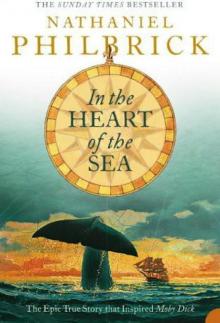 In the Heart of the Sea: The Epic True Story That Inspired Moby-Dick
In the Heart of the Sea: The Epic True Story That Inspired Moby-Dick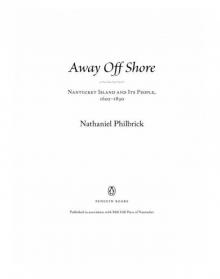 Away Off Shore: Nantucket Island and Its People, 1602-1890
Away Off Shore: Nantucket Island and Its People, 1602-1890 The Mayflower and the Pilgrims' New World
The Mayflower and the Pilgrims' New World The Last Stand: Custer, Sitting Bull and the Battle of the Little Big Horn
The Last Stand: Custer, Sitting Bull and the Battle of the Little Big Horn Second Wind
Second Wind Away Off Shore
Away Off Shore The Mayflower and the Pilgrims' New World*
The Mayflower and the Pilgrims' New World*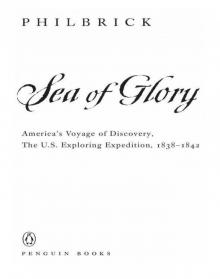 Sea of Glory
Sea of Glory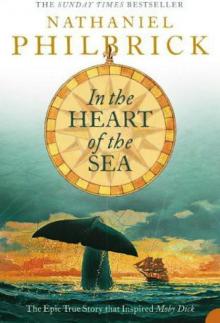 In the Heart of the Sea
In the Heart of the Sea The Last Stand
The Last Stand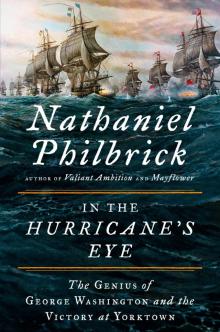 In the Hurricane's Eye
In the Hurricane's Eye